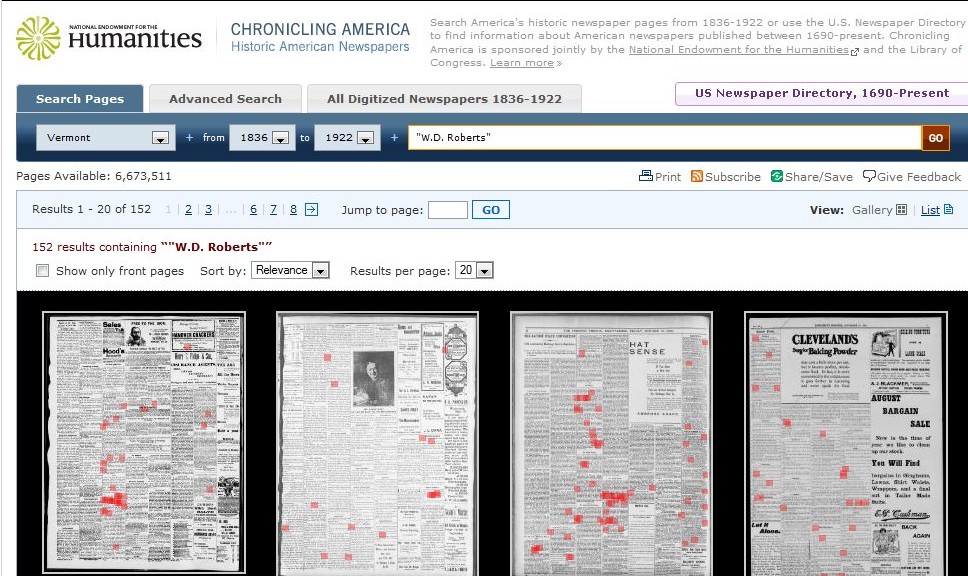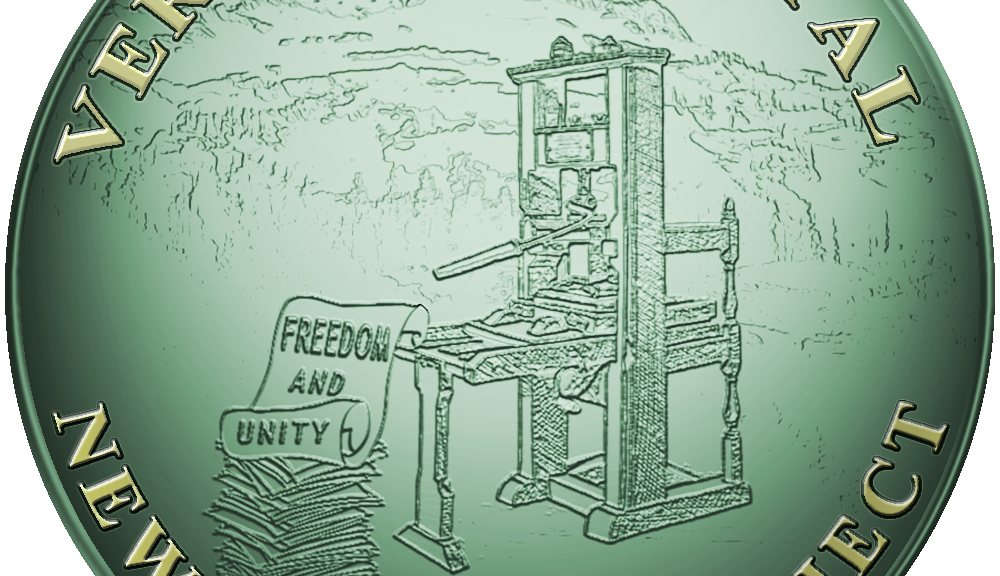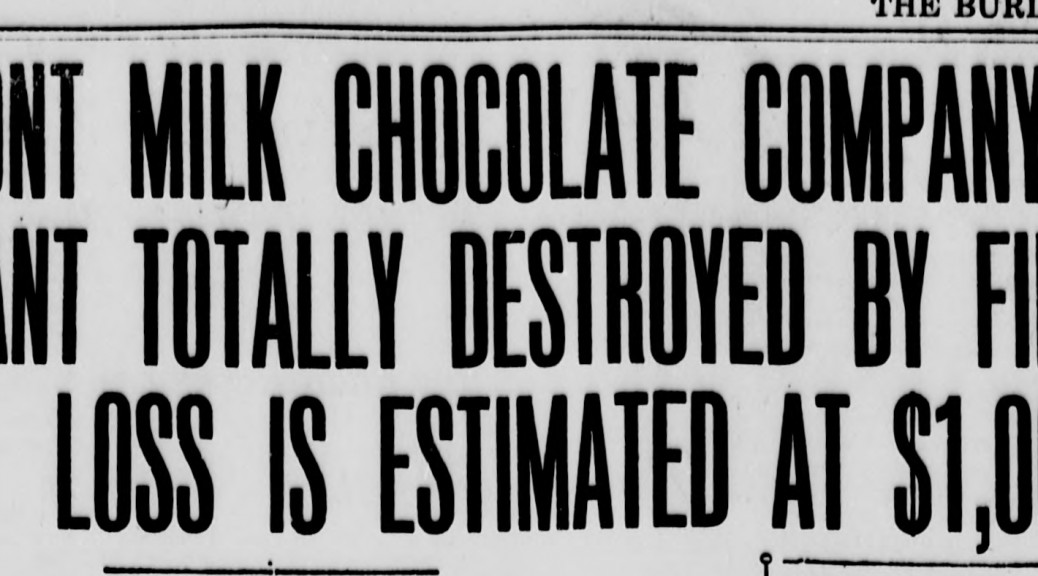 Now available on Chronicling America, our first French-language title, Le Patriote canadien! Published from 1839 to 1840 by the well-known French-Canadian printer and
Now available on Chronicling America, our first French-language title, Le Patriote canadien! Published from 1839 to 1840 by the well-known French-Canadian printer and 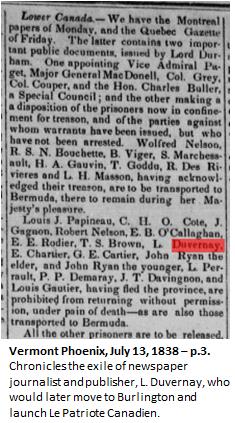 journalist, Ludger Duvernay, Le Patriot!
journalist, Ludger Duvernay, Le Patriot!
e canadien is an enduring chronicle of the ties between Vermont and Québec during an important period of history. The Rebellion in Lower Canada / La rébellion du Bas-Canada in 1837-1838, marked the culmination of a long political conflict between the civil population of Lower Canada (now Québec) and the forces of the colonial British government. As tensions mounted, armed clashes erupted between the rebels or ‘patriotes’ and the British. Martial law was declared, and many patriots were exiled under pain of death. Claiming civil rights and the establishment of an independent Canadian Republic, many of the exiles fled across the border to Vermont. In the wake of these circumstances, in August 1839, Le Patriote canadien emerged in Burlington, published by Duvernay, a prominent exile and consummate journalist, as an organ of dissemination and communication to flame the fire of rebellion again!
st the injustices of the colonial regime. Continue reading Our first French-language title, Le Patriote Canadien
All posts by VTDNP
Genealogy Search Tips for Chronicling America
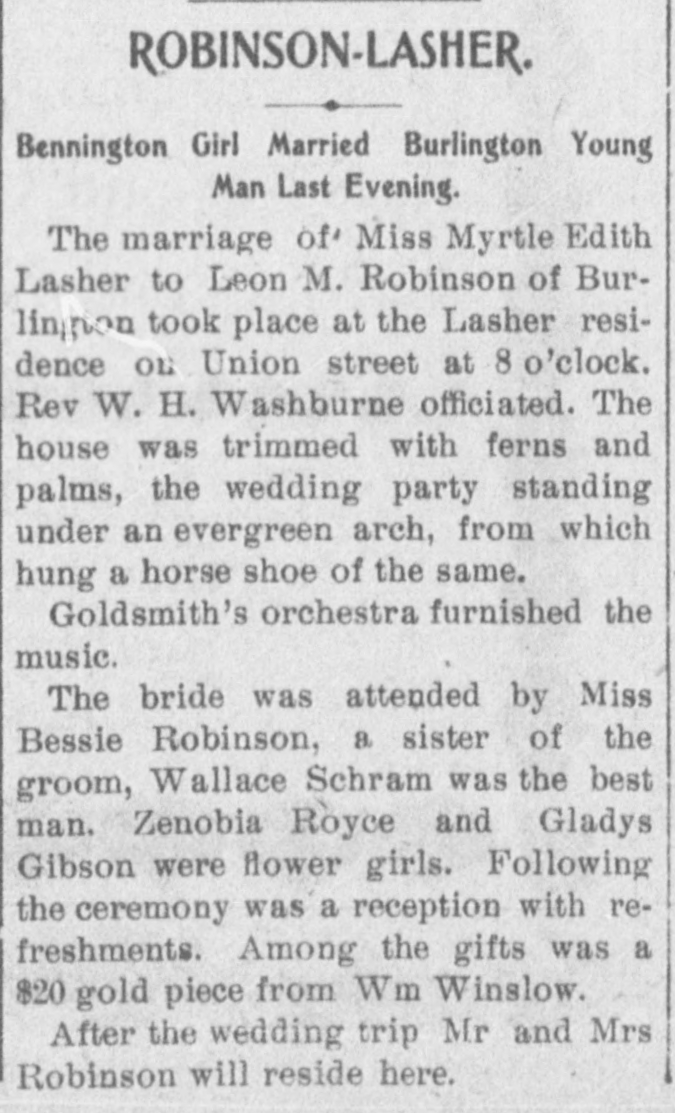
The search for ancestors, while generally rewarding, can be difficult and time-consuming; as an amateur genealogist I can attest to this. For genealogy research, certainly, historic newspapers contain a wealth of information about relatives, for newspapers can include local news, marriages and deaths, participant lists (military recruitment lists, organizations, meetings, parties), advertisements, social and political functions, local individual updates (e.g., “Mrs. William Johnson received her parents this past Wednesday”–these may or may not be helpful!), and legal notices (deeds, court happenings, divorces, estates). This is, if you can find it amid hundreds of thousands of pages. Generally, this has often meant hours of scanning newspaper microfilm or going through actual newspapers at a historical society or library.
Thankfully, Chronicling America provides an online platform for searching historic newspapers from across the United States. Chronicling America is an accessible and free search tool that greatly eases the search of newspapers for traces of the past. Currently, thirty-eight states, including Vermont, have over 6.6 million pages from 1,105 newspapers available for search on the website from the years of 1836-1922. Continue reading Genealogy Search Tips for Chronicling America
From WP.com: VTDNP 2013 in review
The WordPress.com stats helper monkeys prepared a 2013 annual report for this blog.
Here’s an excerpt:
A New York City subway train holds 1,200 people. This blog was viewed about 5,000 times in 2013. If it were a NYC subway train, it would take about 4 trips to carry that many people.
User Spotlight Series: Vermont Milk Chocolate Company
Periodically, we’ll be interviewing researchers and showcasing projects that are using content from Vermont historical newspapers on Chronicling America.
Our first interviewee is Frances Gubler, a graduate historic preservation student at the University of Vermont, who has been conducting research this fall on historic industrial and manufacturing buildings on Flynn  Avenue in Burlington, Vermont, as part of a class research project. Fran graciously agreed to meet and share some of her newspaper findings.
Avenue in Burlington, Vermont, as part of a class research project. Fran graciously agreed to meet and share some of her newspaper findings.
To start, I asked Fran what she found valuable about Chronicling America.
“Chronicling America is easy to use. Microfilm is interesting, but it is also intimidating. With Chronicling America, you can do a quick keyword search and get results,” said Fran. Continue reading User Spotlight Series: Vermont Milk Chocolate Company
You’ve Heard The Phrase “100-Year Storm?”
As the world turns its sympathy toward the Philippine islands devastated, just days ago, by the largest typhoon in recorded history, a fascinating fact has emerged and moved explosively across the Internet:
Just over a century ago, those same islands – indeed that same nearly destroyed town on the island of Leyte, Tacloban – were raked by another death-dealing typhoon that was estimated to have killed 15,000.
How was this fact verified? By reference sources available right on the web, housed here at the Library of Congress on a site known as “Chronicling America.” The site offers hundreds of old newspapers, online, and is searchable. It’s a joint project of the Library and the National Endowment for the Humanities. Activity on that site (especially from mobile devices) suddenly spiked starting two days ago – it was five or six times the traffic of a normal day — and when our web analysts looked into it, they found typhoon links and a big upsurge in traffic from users in the Philippines underpinning that.
Here’s the link that went viral.
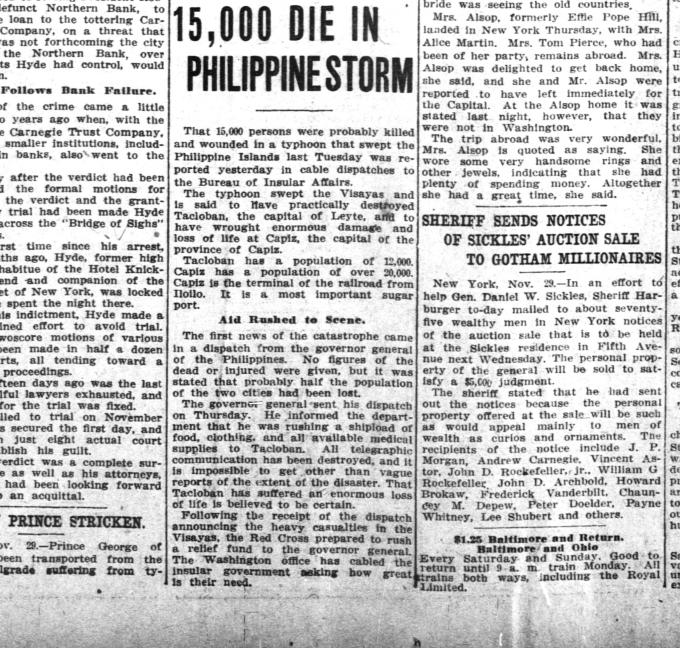 It’s a shame that it takes a tragedy – make that two tragedies – to bring this excellent research tool into focus. And, while this is indeed a sad story, looking at old newspapers isn’t exactly drudgery – you may notice, while doing research in old papers, how easy it is to be distracted by the highly opinionated writing, the ads for everything from corsets to cure-all medicines and the odd, sometimes ridiculous illustrations. If you’re not careful, you’ll never get that research done!
It’s a shame that it takes a tragedy – make that two tragedies – to bring this excellent research tool into focus. And, while this is indeed a sad story, looking at old newspapers isn’t exactly drudgery – you may notice, while doing research in old papers, how easy it is to be distracted by the highly opinionated writing, the ads for everything from corsets to cure-all medicines and the odd, sometimes ridiculous illustrations. If you’re not careful, you’ll never get that research done!
The suffering denizens of Leyte will include no one who can remember their past as far back as 1912; sadly, they were condemned to repeat it. But there’s a glimmer of hope in this history as well – Tacloban made a comeback after that horrifying storm 100 years ago. Presumably it can again.


